175 Years of Shipowning and Enterprise – Part One
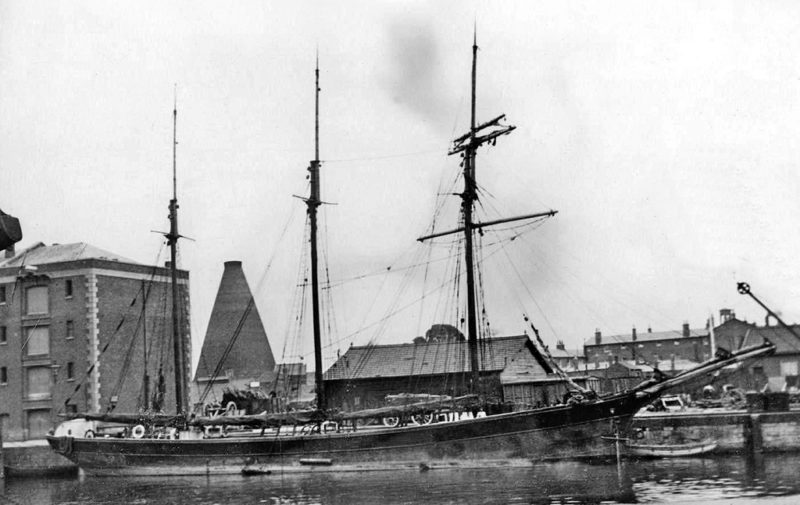
The Port of Barrow-in-Furness was founded on the export of iron ore and by the first Barrow Harbour Act of 1844. A London banker, John Abel Smith, built a causeway and pier under a Parliamentary Act of 1843, and together with the creation of the Furness Railway Company in 1844, Barrow was set for much industrial expansion. Dalton-in-Furness lies four miles north of Barrow on the Furness peninsula, and was the centre of a huge iron ore mining district. The formerly agricultural town was encircled from around 1810 by iron ore mines and quarries at Tytup, Crossgates, Roanhead, Elliscales, Butts Beck, Longlands, Mouzell, and Park Mine, the largest of the mines. A total of over 50,000 tons of iron ore was taken by carts in 1844 for the coastal trade from Barrow, and which had increased dramatically again by the opening of the Furness Railway in 1846. The beautiful Church of St. Mary at Dalton was built between 1882 and 1885 on the wealth of iron ore by the renowned architects Austin and Paley on a small hill in the centre of the town.
James Fisher (1822-1873), with a farming and mining background, began in 1847 in shipping by buying 64ths shares in small smacks and schooners, and increased his fleet when he became the shipping agent in 1851 for Henry Schneider, succeeding his elder brother Thomas in the position. Schneider owned the large Park Mine together with his partner John Hannay, and with the Dalton mines producing some 465,000 tons of iron ore in 1859 a considerable coastal trade flourished at Barrow. There were usually fifteen to twenty small schooners waiting to load each day at eight iron ore piers in 1859, and in the new enclosed docks at Barrow in the 1860s, with Devonshire Dock opened in 1867, Buccleuch Dock opened in 1873 and Ramsden Dock in 1879. James Fisher worked with Schneider and Hannay to select the site for the new Barrow Haematite Iron & Steel Company works, whose blast furnaces were in full production in 1867 when the Dalton mines were producing 670,000 tons of iron ore, of which half was then smelted at Barrow, and half was exported.
Small coastal two and three masted schooners were the backbone of the Fisher iron ore export trade, and they also traded with coal, grain and timber in the Irish Sea trades. The three masted barque Lizzie of 426 grt was completed in 1868 for the distant trades to the Mediterranean and India, and was one of a small number of sailing ships where the 64ths were owned outright by the Fisher family. The Fisher fleet reached a peak of nearly eighty vessels in 1872, with 64ths owned as either a minority or a majority. Some of the smaller schooners were given Fisher family names e.g. Annie Fisher, Joseph Fisher, Alice Fisher, Frank M. Fisher, and James W. Fisher. A dozen wooden or steel three masted schooners were completed from 1880 by the Rodgers yard at Carrickfergus as Fanny Crossfield, Mary Armstead, Mary Miller, Louie Bell, Annie Crossfield, Edith Crossfield, George B. Balfour, Annie Park, Creek Fisher, Shoal Fisher, Ford Fisher and Pool Fisher, a painting of the latter ship showed she had a green hull. Shoal Fisher of 139 grt and 220 dwt with a Master and a crew of three had hull dimensions of overall length of 106.1 feet, moulded beam of 22.6 feet, moulded depth of 9.3 feet, and a loaded draft of 8.6 feet. Pool Fisher was lost with all hands by a collision off Dungeness in 1908.
The founder James Fisher had managed the Fisher shipping company until 1870, and had three sons in Joseph Fisher (1844-1900), John Fisher (1850-1900), and James Fisher (1854-1915), all of whom managed the company and fleet at one time or another, with James taking over the management of the company in 1900. John Fisher and the second James Fisher both served as Mayors of Barrow. John unfortunately suffered from ill health and died in 1900.
The family ordered six coastal steamers of up to 600 dwt from the Belfast yard of McIlwaine & McColl for delivery between 1883 and 1892 as Sea Fisher, Bay Fisher, Lough Fisher, Stream Fisher, Race Fisher and Strait Fisher. The latter steamer was of 465 grt and had hull dimensions of overall length 174.5 feet, moulded beam of 26.1 feet, and moulded depth of 12.4 feet. This Belfast yard also launched the very unfortunate four masted steel schooner Lake Fisher of 289 grt on 6th February 1890, with her registration date given as 18th February 1890. She sailed immediately on her maiden voyage to South America, but was never seen again and was lost with all hands.
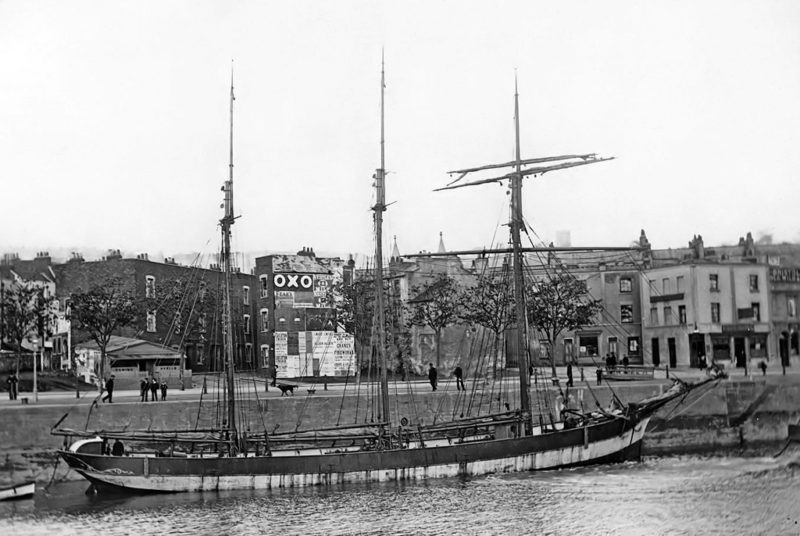
IRON ORE TRADES FROM COUNTY ANTRIM
The rich seams of red haematite at Dalton-in-Furness began to falter in production due to flooding at the end of the 19th century, with production only of 310,000 tons in 1915, half of the figure for 1900. The huge Park Mine closed down in 1921 as the last iron ore mine, but today limestone and sandstone quarries and a brickworks are still in production. Fortunately, by chance, the second James Fisher found an equally abundant source of red haematite at Glenravel in Northern Ireland. Glenravel is one of several picturesque hilly Glens of Antrim in Northern Antrim.
The second James Fisher often used to stay with his brother Thomas at his rented white painted large stone house of Cleggan Lodge, on land owned by Lord O’Neill in Antrim. The financial affairs of Thomas Fisher were in trouble by May 1862 when James Fisher purchased Cleggan Lodge and the surrounding land for £10,000. James Fisher very much enjoyed the life as a country gentleman at Cleggan Lodge, and was visited in the summer of 1866 by the Reverend William Macaulay with a sample of red haematite in his hand. The priest was a keen rambler and interested in geology, and as with many other local men he knew that there were extensive iron ore deposits seven miles north of Ballymena at Slievenanee (Iron Mountain). By early July 1868, James Fisher had opened several horizontal entrances and passageways into the mountain, and his miners, all part farmers supplementing their incomes, were extracting 300 tons of top quality (60% iron) haematite per week, and selling at one pound per ton to the Barrow smelters.
The enterprising James Fisher had brilliantly succeeded in exploiting the rich seams where others had failed to locate these richer seams to make the mining profitable. The iron ore was taken from the mines at Ballynahavia near Cargan by a tramway built by James Fisher two miles to Parkmore, with Cargan temporarily renamed as Fisherstown. Some 700 men had been employed by James Fisher to work the mines with production at around 40,000 tons per year and which lasted for seventy years. The new source of haematite was shipped in sailing ships and steamers from Red Bay on the coast of Antrim and from Larne to the south of the Mull of Galloway and along the south coast of Scotland to Barrow for smelting. An overhead bucket system transported the ore from Cargan to Red Bay, but was sabotaged during the night of 13th July 1873 and was never repaired. The iron ore was then taken by rail via Ballymena to the shipment points at Larne.
The Fisher mine was at Glenravil, but other entrepreneurs opened similar haematite mines e.g. the Antrim Iron Ore Company at Cargan and Dungonnell, the Crommelin Mining Company at Tuftarney, and the Evishnacrow Iron Company at Evishnacrow. The miners worked eight hour shifts in very muddy conditions, and huge quantities of iron ore were transported by Fisher’s own sail and steamer fleet until the Glenravil mine was closed on 29th October 1913 because the best quality iron ore had been worked out. Flooding of the mines was common due to following the line of the seams when they dipped further into the mountain. The vast quantity of second-best quality iron ore remains unworked in the mines to this day as it could not produce acceptable prices per ton at the smelters. The lack of profitability persuaded the other mine owners to give up mining by 1923.
The importance of the Dalton-in-Furness and the Glenravil iron ore mines in Antrim was crucial to the longevity of the very big Fisher sailing and coastal steamer fleet for the long period from 1847 to the end of 1913. Iron ore was being imported from many other mines at home and in Spain, Sweden and other countries to satisfy the big appetite of the Barrow smelters. Stream Fisher frequently loaded iron ore at the Ronez quarry and loading point on the north tip of Jersey in the years before World War I.
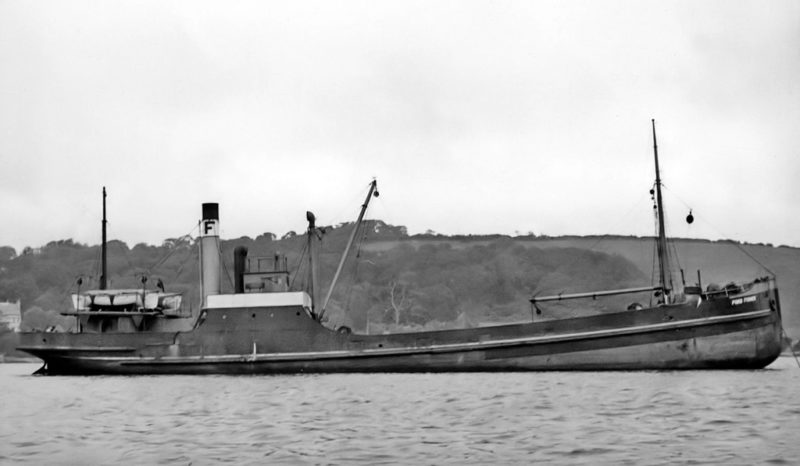
A NEW CENTURY AND FLEET OPERATIONS FROM 1900 TO 1950
At the turn of the new century, the Fisher owned fleet stood at 26 sail and steam powered coasters, of which eighteen hoisted sail around the coast, and eight were steam powered vessels. There were also around 25 to 30 managed coasters or others on very short charters in the other coastal trades of coal, grain, timber, slate and other cargoes. Bay Fisher (2) of 478 grt was the only ship, either sail or steam powered, to join the fleet between 1900 and 1914, she was built by the Dublin Dockyard in 1904. This was due to continual trade slumps lasting one to three years, with the slump between 1908 and 1911 as the worst with many ships laid up.
The big coastal Fisher fleet lost two steam powered coasters and one coastal schooner to enemy action during World War I, with three more sailing ships and one steam coaster lost due to marine causes. Sea Fisher, built in 1883 as the first coaster in the fleet, sailed from Waterford for Barrow on 9th December 1916 with a cargo of larch pitprops and was never seen again. Lough Fisher built in 1887 was sunk by gunfire from U-101 on 30th March 1918 a dozen miles SSE of Helhuick Head on the Irish coast with the loss of all thirteen crew members. The crew of the schooner Louie Bell were left to drift in a lifeboat after she had been shelled bu a U-boat, and lost all of their personal possessions to looting by the crew of the U-boat before they were rescued by a British ship.
In 1920, the Fisher Head Office was at Fisher’s Buildings in Barrow, with a branch office in Heysham to handle iron ore imports for the Carnforth Haematite Iron Co. Ltd. of Lancaster, as well as for imports of timber destined for the big cities of Lancashire. John Fisher lived at his home of Drumard in Barrow, and the Superintendent engineers were MacIlwaine & Son of Belfast. James Fisher & Sons was made into a limited liability company in 1926, the original company having been set up in the 1850s.
Between the end of World War I and 1920, the Fisher fleet stood at five steam coasters in Creek Fisher of 1918, River Fisher of 1899, Stream Fisher of 1891, and the quarter-deckers Clapham of 1901 and Southwark of 1899, together with eight sailing coasters named Bidsie and Bell of 1873, British Queen of 1864, Ellie Park of 1879, Fanny Crossfield of 1880, Mary Miller of 1881, Mary Sinclair of 1876, Mary Watkinson of 1872 and Shoal Fisher of 1890. British Queen of 164 grt and 250 dwt had been acquired in 1874 and served for fifty years until she was the last sailing ship in the fleet when sold in 1924. Creek Fisher of 747 grt and 1,060 dwt had been completed in 1918 at Tonsberg as Holland and then renamed Otterdal for Continental owners and served in the Fisher fleet for twenty years until sold in 1940.
The Fisher fleet of three steam powered coasters had to work hard during the low freight rate years from 1924, with River Fisher of 1899 and Southwark of 1889 sold during 1929/30 and replaced by two former General Steam Navigation Company coasters named Mavis and Iris of 501 grt and 415 grt respectively, renamed Sound Fisher and Lough Fisher. Lough Fisher grounded on 28th December 1935 to north west of Barrow in fog while on a voyage from Ayr to Barrow with coal and was lost.
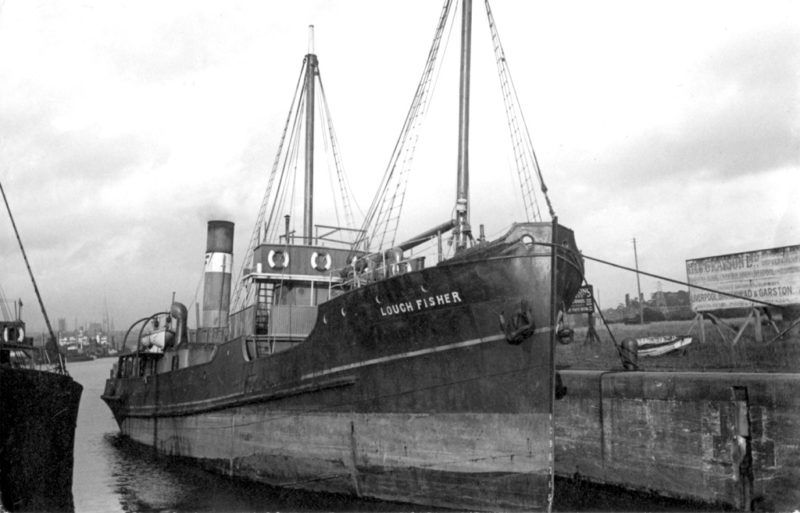

In 1932, the fleet increased to six steam powered coasters with the purchase of the coaster Orleigh of 484 grt, renamed Race Fisher built in 1919, and her sister coaster Ortona renamed Stream Fisher, as well as Jolly Diana of 449 grt built in 1913 renamed as Ford Fisher. More coasters were purchased in the years of the Great Depression when 180 to 200 ships were laid up on the Tyne, and shipowners were either selling ships at knock down prices to survive, or had already gone out of business. The Fisher purchases continued between 1933 and 1939 with:-
- River Fisher of 590grt built in 1920 by John Duthie Torry at Aberdeen as Jolly Hugh
- Bay Fisher (3) of 575grt built in 1919 by John Lewis at Aberdeen as Tarnwater
- Firth Fisher (2) of 574grt built in 1919 by John Lewis at Aberdeen as Freeland
- Sea Fisher of 552grt built in 1920 by Goole Shipbuilders & Repairers as Fairland
- Strait Fisher of 573grt built in 1917 by J. Lewis at Aberdeen as Dragoon
- Pool Fisher of 605grt built in 1921 at Barnstaple as M. J. Craig
- Channel Fisher of 700grt built in 1921 by Chambers of Lowestoft as Portlaurie
- Shoal Fisher of 698grt from the Vickers-Armstrong yard at Barrow in 1937 as the
- first new motor coaster in the fleet
- Loch Fisher of 511grt and built in Holland in 1931 as the motor coaster Maraboe
Kyle Fisher of 520grt and built by the De Haan yard at Heusden in Holland in 1939 as a motor coaster Sea Fisher was sunk in a collision in March 1936, and the Fisher fleet had ten dry cargo coasters on the outbreak of war in September 1939. They were called upon to carry out heavy cargo transportation on charter to the British Government during World War II as they had long unobstructed holds, with four losses to enemy action or due to marine causes as follows:-
- Firth Fisher was mined and lost on 21st May 1940 during the Dunkirk evacuation half a mile East of Boulogne Pier while on a voyage from Littlehampton and Dover to Boulogne with 480 tons of ammunition and Army stores, 7 lost with pilot and 3 others saved.
- Bay Fisher was bombed and sunk on 7th February 1941 when around three miles from the Bell Rock while on a voyage from Scapa Flow to Rosyth with 200 tons of Government stores, 7 crew and 1 gunner lost, 4 crew and a gunner saved.
- Shoal Fisher was mined and sunk on 21st February 1941 off the Cornwall coast while on a voyage from Barrow to Devonport with four triple 6 inch gun mountings for the cruiser Jamaica, all 14 crew were saved by a minesweeper and landed at Falmouth.
- Strait Fisher capsized and sank in January 1945 while sailing in a coastal convoy from Plymouth to Silloth with a cargo of grain consigned to Carr Mills, she had been fitted with a heavy concrete wheelhouse and when her cargo shifted she had no stability left, several crew were lost.
Several Fisher seafarers were decorated for their war time service including Capt. Hugh Roberts of Stream Fisher, Capt. Bertram Hancock of Ford Fisher, Capt. Philip Grey of River Fisher, Chief Engineer John Paysden, Chief Officer Patrick McPartland, Chief Steward Arthur Willows and Bosun Albert Leslie (posthumous while serving on Strait Fisher).
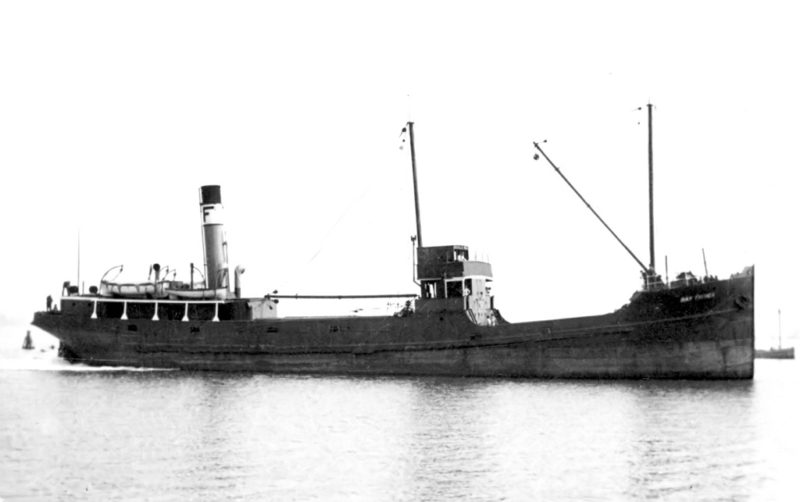
Sir John Fisher (1892-1983), grandson of founder James Fisher and son of the second James Fisher, became the sole proprietor of James Fisher & Sons in 1915. He then held several important posts during the inter-war years, including Vice Chairman of the British Chamber of Shipping from 1929 to 1935 and Chairman from 1935 to 1939, and was Managing Director of the family limited liability company set up in 1926. He was also a Spanish Vice Consul, a tiresome duty during the Spanish Civil War from 1936 to 1939 when many Spanish nationals fled to Britain. He took up the post of Director of the Coasting and Short Sea Division of the Ministry of War Transport from 1939 until March 1946. He was knighted in 1942 in recognition of his services to the country during the Dunkirk evacuation and for his long wartime management of the U.K. merchant shipping and fishing fleet.
Two larger and important sister vessels of 2,950 grt named Sea Fisher (3) and Sound Fisher (3) were completed during 1940/41 as heavy lift ships by the S.P. Austin & Son yard at Sunderland. A joint company with North East Coast collier owners France, Fenwick & Co. Ltd. was set up as Fenwick, Fisher Steamship Company to carry the biggest battleship guns to the shipyards where they were under construction. When not required for these duties, they were used as colliers, their hatchways were 76 feet in length with circular bulges on both sides to take the gun turrets. Sound Fisher (3) was never actually owned by Fishers, being considered as the France, Fenwick vessel, while Sea Fisher (3) served Fishers until sold in 1956 carrying post-war heavy lift cargoes.
Many other vessels were managed by Fishers during World War II, and in 1946 nine ‘Empire’ coasters were purchased. The sisters Empire Jill, Empire Judy and Empire Jack of 746 grt became Race Fisher (3), Stream Fisher (3) and River Fisher (3) and served Fishers for over 20 years in the coastal trades. River Fisher (3) was converted at Workington in 1965 to carry irradiated nuclear fuel from Anzio in Italy to Barrow. She was sold in 1969 and renamed Ramaida and was broken up at Lisbon in September 1977. River Fisher (3) was sold in 1967 to Iran and renamed Owenduv and foundered ten miles north of Leixoes on 13th January 1972 while on a voyage from Villagaroia to Monaco, nine crew were lost. Stream Fisher (3) was also sold to Iran and renamed Fardad and completed a fifty year career in 1992.
A jointly owned company called Middle East Coastal Services (MECS) was set up to own six ‘Empire’ coasters completed on the Humber in 1945/46 by the Goole and Henry Scarr Ltd. yards. They were given ‘Desert’ names such as Sidibarrani to operate from Egyptian, Jordanian and Red Sea ports carrying kerosene and motor fuel in cased oil cans supplying British forces at Aqaba during the Palestinian crisis of 1946/49. They were returned to Fishers in 1951 and three years later were sent out to the Caribbean to operate for another jointly owned company between U.S.A. ports and Guatemala.
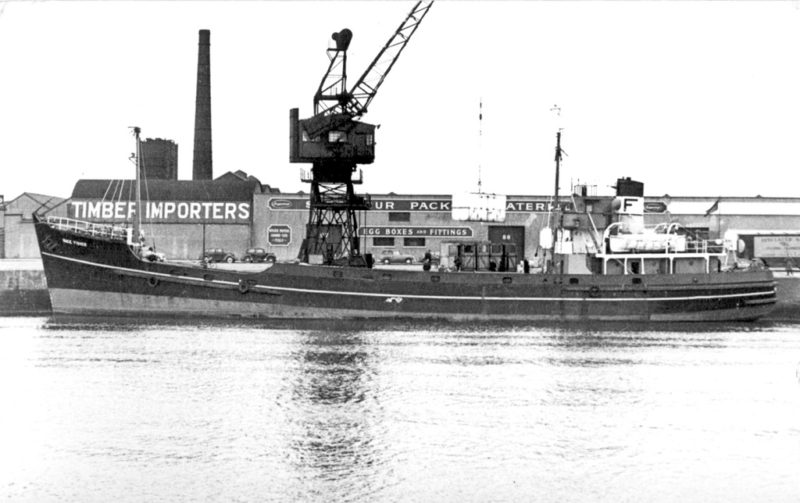
NEW POST-WAR TRADES FROM 1950 TO 2000
Traditional coal cargoes for Fishers declined in the immediate post-war years as nationalisation of the gas and electricity industries created dedicated coastal collier fleets around the British coasts. Instead, Fishers went in for several forms of specialised cargoes, from heavy lift of railway locomotives and carriages and the return of wartime heavy plant from German and Dutch ports, to container carrying between Heysham and Belfast on charter to British Rail, and a lo-lo (lift on, lift off) service between Felixstowe and Rotterdam. The British coastal trade had returned in 1950 to its previous pre-war peak of 1937, and post-war prospects looked good.
Sir John Fisher made the company into a public one on 17th October 1952 with six million ordinary shares quoted on the London Stock Exchange. Trades were found in distant waters with Sea Fisher (3) of 1942 shipping locomotives and rolling stock to Sept Iles on the St. Lawrence for the construction of a railway line to this iron ore port. Firth Fisher (3) of 979 grt was purchased in 1954 when four years old and was used each year for a six month charter to Bell Telephones on the St. Lawrence. Gun turrets and heavy armaments were carried from the Vickers plants at Barrow to many ports in the traditional Baltic to Biscay range of ports. Charters continued to British Rail for the carriage of containers on Irish Sea and English Channel routes.
Two coasters were lost to marine causes in the late 1950s, with Sound Fisher (4), purchased in 1951 from Ben Line as Benveg, and capsized and sinking on 13th January 1957 five miles east of Noss Head while on a voyage from Orkney Isles to Ghent with a cargo of scrap iron and steel. Lough Fisher (3) built in 1950 by the Clelands yard on the Tyne as Slaney and purchased in 1955, ran aground on 13th November 1959 on Oland Island off the coast of Sweden while on a voyage from Koge to Hamina and broke in two and was lost.
In 1959, the Fisher fleet comprised eight coastal vessels in Bay Fisher (2) of 1,289 grt and 1,646 dwt completed in 1958 by the Ardrossan Dockyard, Firth Fisher (2) of 979 grt and 1,250 dwt completed in 1950 at Goole, three former ‘Empire’ war built coasters of 746 grt and 1,010 dwt in Race Fisher (2), River Fisher (3) and Stream Fisher (3), Pool Fisher of 1,028 grt and 1,500 dwt completed in 1959 at Foxhol in Holland, Lough Fisher of 994 grt and 1,248 grt completed by the Clelands yard on the Tyne in 1950, and the former Kyle Fisher of 603 grt and 810 dwt completed in 1937 by the De Haan yard at Heusden in Holland and now sailing as Seatern for Seaway Coasters Ltd. These coasters moored on one side of Buccleuch Dock when in Barrow, and also nearer to the now open entrance of this dock, while during 1960 the huge white hull and superstructure of the P&O-Orient Lines liner Oriana was fitting out on the opposite side of the dock. She had accommodation for 638 First Class and 1,496 in Tourist Class and carried a big crew of 980 on her line voyages to Australia. As she was designed by a naval architect working for Orient Line, there was no way that her famous twin ‘pepperpot’ funnels were ever going to be repeated by P&O on any of their future liners, nor on any other liner.
Fisher Lines had begun in September 1958 carrying containers, road tankers, trailers, flats, heavy lifts and unitised cargo that could be lifted onboard by a hammer head crane. Pool Fisher of 1959 and Bay Fisher of 1958 sailed on a regular scheduled liner service from Felixstowe to Rotterdam and Continental ports. The service used two ships from January 1960 as all manner of cargo from oil industry plant and farm machinery to anything that could fit into special low capacity containers of 15 tons maximum load was carried. The service ended in 1968 due to competing services at Felixstowe.
Managed ships of Albright & Wilson Ltd. such as Arthur Albright of 10,000 dwt built in 1960 at Burntisland for a bulk trade between Florida and Portishead. In 1968, the Tyne built Albright Pioneer and Albright Explorer of 10,520 dwt began a trade carrying liquid molten phosphorus from Long Harbour in Newfoundland to Portishead. Phosphates from Morocco to the Whitehaven in Cumbria plant of Marchon Products Ltd. were transported in the managed Marchon Venturer, Marchon Trader and Marchon Enterprise of 2,500 dwt, built by Clelands on the Tyne in 1962. Whitehaven harbour was devoted entirely for the import of phosphates from Casablanca, as Marchon Products Ltd. had exploited deposits of anhydrite under St. Bees Head from as early as 1946 for delivery to Whitehaven. The demand for imported phosphates increased so much that Klaveness of Norway and A/S Bulkhandling bulk carriers such as Bangor of 20,000 dwt arrived and anchored outside the harbour as they were too large to enter. A special barge, Odin, was then managed by Fishers via Anchorage Ferrying Services Ltd. to trans-ship from these bulkers outside the harbour and thus import the phosphate rock into harbour. When Whitehaven harbour closed, phosphoric acid was imported via Workington to the plant to keep it operating for a few more years after the Millennium. The parent company of Marchon Products Ltd. was Albright & Wilson Ltd.
An important new innovation began in 1965 when the carriage of irradiated nuclear fuel began to support the new nuclear power industry such as the Calder Hall nuclear plant in Cumbria or the nearby Seascale reprocessing plant. Stream Fisher built in 1943 was converted to carry irradiated nuclear fuel rods in fuel flasks to begin a long association by Fishers in this trade on charter to British Nuclear Fuel Ltd. (BNFL) with contracts for British, Japanese and French Governments. Leven Fisher of 1,541 grt was completed by the Burntisland yard in 1962 for the Marchon Products Ltd. phosphate trade into Whitehaven. She brought back spent irradiated fuel from the Hitachi nuclear reactors in Japan using the Panama Canal in September 1969 on the return leg of her maiden Round the World voyage to Japan. She was joined in 1974 by another converted cargo ship renamed Pacific Fisher with a blue hull, built at Rostock as Jopulp. Specialist purpose built ships were then built for BNFL and managed by Fishers including Pacific Swan in 1979, Pacific Crane in 1980, Pacific Teal in 1982, Mediterranean Shearwater in 1981 and later renamed European Shearwater, Pacific Sandpiper in 1985 and Pacific Pintail in 1987, all with deep blue hulls.
Two diesel electric powered heavy lift ships joined the fleet in 1966 as Aberthaw Fisher of 2,355 grt from the Ailsa yard at Troon, and her exact sister Kingsnorth Fisher from the Hall, Russell yard at Aberdeen. The pair worked on an initial ten year contract to the Central Electricity Generating Board (CEGB) to carry heavy power station equipment around the British coasts, but the work was very important and they were then taken on long term charter. The pair became the most recognised and long lived of all the post-war Fisher vessels, with the pair renamed respectively as National Generation and New Generation in 1990. Aberthaw Fisher was finally sold after 30 years of service in 1996 for use as a diamond dredger in South Africa as Moonstar. Kingsnorth Fisher continued on her designed service until she was sold and renamed New Gen in 2001. Their design featured an angled 110 feet long stern loading deck, sufficient to carry three transformers, rotors or stators, which were winched over the stern on to the main hydraulic lift, which descended into the main hold. The lifts could cope with 500 tonne lifts, and were specially designed by the Scottish engineering firm of MacTaggart Scott, and consequently each ship cost almost £1 million to build.
This pair of heavy lift ships could undertake other heavy lift work with the consent of the CEGB, and in 1970 when the Menai Strait railway bridge was put out of action by a fire, Kingsnorth Fisher was chartered for three voyages to take eleven stranded locomotives from Anglesey to Barrow to continue in service. I saw this pair many times at work around the British coasts, with her new Asian owner from June 2001 of New Gen sailing her from Barrow to Buckie to load pipeline reels for Kalundborg in Sweden. She was given twin black funnels and arrived in the Tyne on 8th August 2001 with the hope of obtaining more heavy lift reel work, but it was not to be and six months later she had arrived at Alang in India for breaking up in February 2002.
Vickers of Barrow were using the former trawler Vickers Venturer of 270 grt built by the Greenock Dockyard in 1963 for oil related deep diving purposes, and she was managed by Fishers from 1968. Vickers Oceanics Ltd. was formed in 1972 with Fishers taking a stake in the venture, with the bigger vessel Vickers Voyager of 2,857 grt, built in 1959 by William Simons & Company at Renfrew, also in service. The Fisher owned shares were sold to Vickers in 1977, and the management of the vessels ended in 1979.
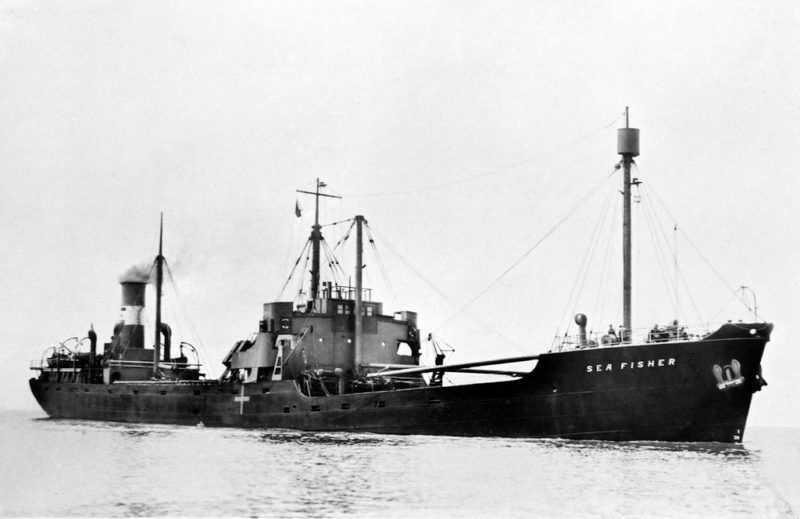

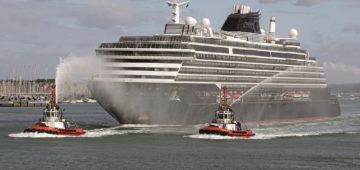


Comments
Sorry, comments are closed for this item